Bad debt decreased in some banks
In the group of state-owned commercial banks, the Vietnam Bank for Agriculture and Rural Development ( Agribank ) has total assets of VND2.3 million billion; capital of VND2.2 million billion; total outstanding loans to the economy of over VND1.92 million billion, of which nearly 65% are outstanding loans for recovery and development of "three agricultures".
Agribank has exceeded its target of controlling bad debt ahead of schedule, with the bad debt ratio on the balance sheet at 1.19% - down 0.39% compared to the beginning of the year and striving to be below 1% by the end of 2025. If this target is achieved, this will be Agribank's lowest bad debt ratio since the implementation of the first phase of restructuring plan (2013) to date. Agribank is also the bank with a significantly lower bad debt ratio on the balance sheet in the "Big 4" group (including Vietcombank, BIDV , VietinBank and Agribank).

As for the group of joint stock commercial banks, Asia Commercial Joint Stock Bank (ACB ), as of the end of the third quarter, had outstanding credit of VND669,188 billion, an increase of 15.2% compared to the beginning of the year, higher than the industry average, of which, business loans increased by 20%.
Thanks to its selective lending and risk control policies, ACB directs capital flows to profitable sectors - the foundation for sustainable growth without sacrificing asset quality. Bad debt (from groups 3 to 5) was VND 7,326 billion, down 15.3% compared to the end of 2024, resulting in a bad debt ratio of 1.09%. Of which, debt with the potential for capital loss (group 5 debt) decreased by nearly 18.7%, from VND 6,748 billion to VND 5,488 billion. The ratio of short-term capital for medium- and long-term loans was also low, reaching 21.8%.
Saigon - Hanoi Commercial Joint Stock Bank (SHB) also strictly controlled bad debt with the target of maintaining it below 2%. Capital safety indicators such as CAR reached over 12%. By the end of the third quarter, SHB's total assets reached VND 852,695 billion, up 14% compared to the end of 2024; outstanding credit balance reached nearly VND 616,600 billion, up 15% compared to the beginning of 2025.
Or for An Binh Commercial Joint Stock Bank (ABBANK), bad debt balance decreased by 23% to VND2,830 billion and decreased in all 3 debt groups, resulting in a decrease in the bad debt ratio from 3.74% to 2.63% (calculated by debt groups 3, 4 and 5 divided by total outstanding customer loans). ABBank's total assets reached VND204,576 billion, up 16%, of which customer loans increased by 9% to VND107,573 billion.
As for Vietnam Thinh Commercial Joint Stock Bank (VPBank), its consolidated credit balance reached nearly VND912,000 billion by the end of the third quarter of 2025, an increase of 28.4% compared to the beginning of the year thanks to contributions from both the parent bank and member companies.
Of which, individual bank credit was at VND813,000 billion. The consolidated bad debt ratio was strictly controlled by VPBank, falling below the threshold of 3%; individual bad debt continued to improve, at 2.23%. After 9 months, revenue from consolidated risk-resolved debt reached nearly VND2,900 billion, in the third quarter of 2025 alone, increasing by 29.7% compared to the previous quarter.
On the contrary, Loc Phat Commercial Joint Stock Bank (LPBank) recorded a 32.4% increase in bad debt to VND6,961 billion, resulting in an increase in the bad debt ratio from 1.58% to 1.79% (total debt of groups 3, 4 and 5 divided by total outstanding customer loans). However, this ratio is still lower than the regulation.
LPBank's total assets increased by 6.1% in the first 3 quarters of 2025, reaching VND 539,149 billion; outstanding loans to customers increased by 17%, reaching VND 387,898 billion, of which loans to individual and household customers accounted for nearly 42% of customer loans and increased by 15% compared to the end of 2025 with more than VND 161,600 billion in outstanding loans. Customer deposits reached VND 326,179 billion, up 15.2%.
Similar to LPBank, bad debt of Vietnam Technological and Commercial Joint Stock Bank (Techcombank) increased by 25.6% compared to the beginning of the year, causing the bad debt ratio to increase slightly (calculated by debt groups 3, 4 and 5 divided by total outstanding customer loans) to 1.16%.
Bad debt forecast to decrease further in the fourth quarter
Forecasting from now until the end of the year, credit institutions all believe that the bad debt ratio may decrease more sharply in the fourth quarter of 2025, contrary to the "increase" assessment of the same period last year.
According to expert Nguyen The Minh - Director of research and development of individual customers of Yuanta Vietnam Securities Company, bad debt is still mainly concentrated in two groups: real estate and consumer credit.
In particular, with real estate, although the ratio structure has decreased compared to last year, bad debt from 2022 to now has not completely decreased, only has a tendency to decrease gradually. The core problem is that the progress of handling projects has not been implemented, leading to the pressure of bad debt still existing.
In addition, bad debt in consumer credit has tended to resurface recently. However, this is an inevitable reality, because when banks increase credit growth, bad debt pressure also increases.
Many other experts expect that the bad debt formation rate of banks will improve positively on the basis of the recovery of the real estate market and policies to support customers' debt repayment ability, in which the group of state-owned banks and large private banks will lead this trend.
Governor of the State Bank Nguyen Thi Hong said that the State Bank will continue to closely monitor the macroeconomic situation, international and domestic financial and monetary markets and improve the quality of forecasting to have proactive, flexible, effective monetary policy management policies and solutions, promptly adapting to the new situation, contributing to the completion of the set monetary policy goals.
In the coming time, the State Bank requires credit institutions to focus on implementing plans to handle/restructure weak credit institutions and special controls approved by competent authorities, especially plans to force banks to transfer; promote bad debt handling, improve credit quality, prevent and minimize new bad debts.
Source: https://hanoimoi.vn/ty-le-no-xau-co-the-giam-manh-723285.html


![[Photo] Unique art of painting Tuong masks](https://vphoto.vietnam.vn/thumb/1200x675/vietnam/resource/IMAGE/2025/11/14/1763094089301_ndo_br_1-jpg.webp)



![[Photo] Unique architecture of the deepest metro station in France](https://vphoto.vietnam.vn/thumb/1200x675/vietnam/resource/IMAGE/2025/11/14/1763107592365_ga-sau-nhat-nuoc-phap-duy-1-6403-jpg.webp)



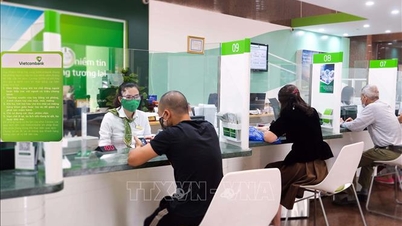



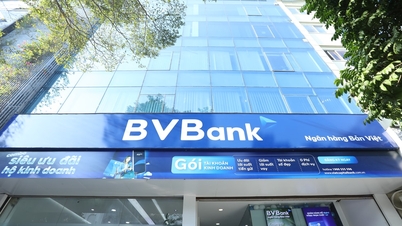
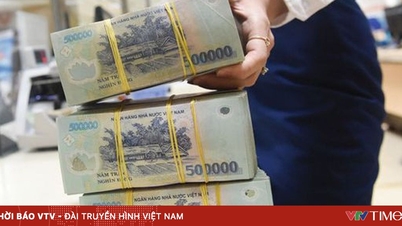

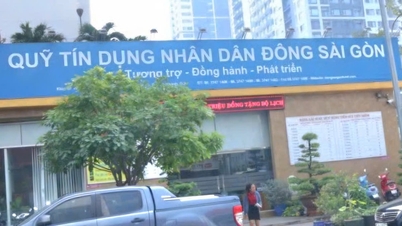




















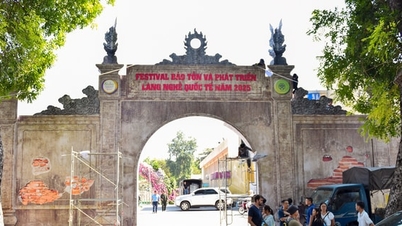

![[Photo] Special class in Tra Linh](https://vphoto.vietnam.vn/thumb/1200x675/vietnam/resource/IMAGE/2025/11/14/1763078485441_ndo_br_lop-hoc-7-jpg.webp)









































































Comment (0)